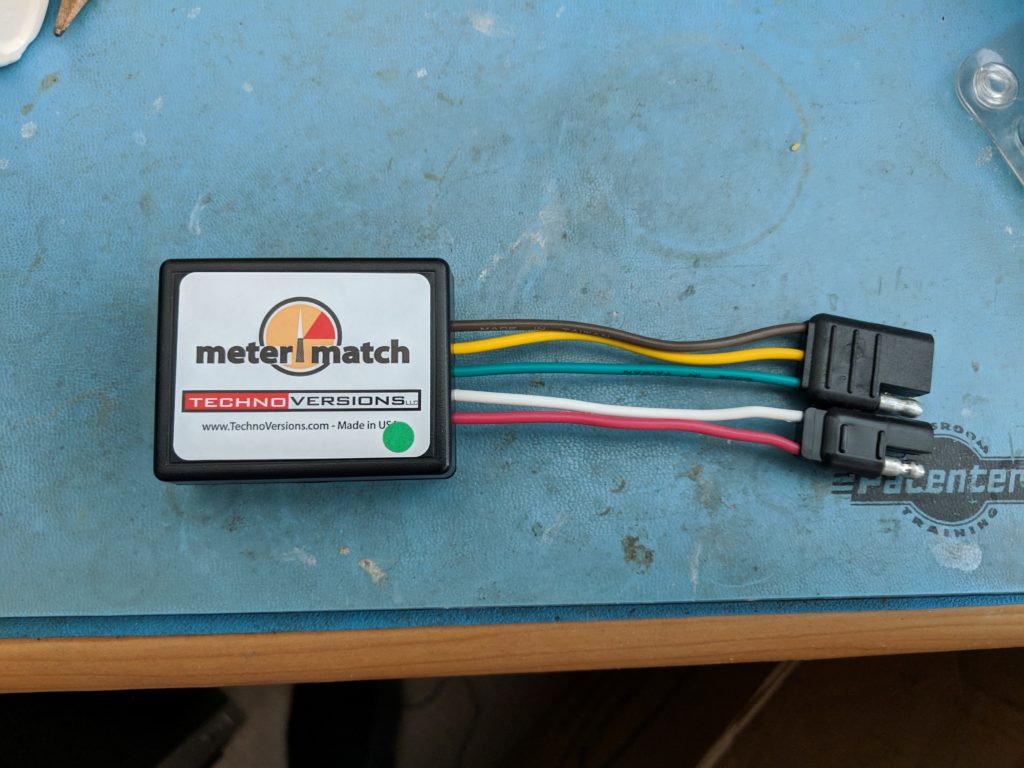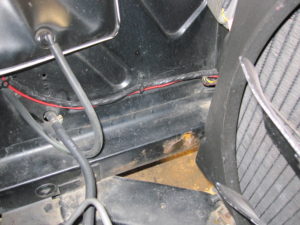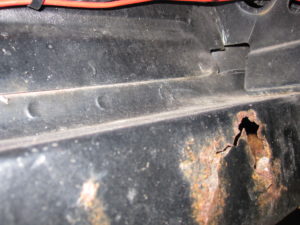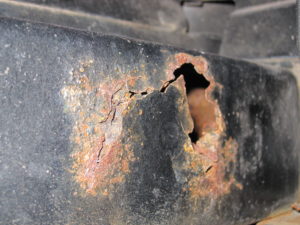It took a week before I had another warm day and was able to get back to work on the driver’s door innards. Having to wait was getting on my nerves as I hate to leave work partially completed. I have to admit I did find some opportunities to test opening, closing, and locking the door. But this was just playing around, not getting real work accomplished.
After watching several online videos I felt that it would make reassembly easier if I removed the guide located at the bottom of the window. I was able to get the regulator out without removing this guide, but reinserting the rollers for the regulator back into the guide looked like it would be tricky. With the guide removed I could insert the rollers outside of the door and then insert the regulator and guide as one assembly. This turned out to be a great plan, but with one hitch.
There are three screws that hold the window guide to the window. Two came out fairly easily. The last one didn’t want to budge. I had a screwdriver that fit tightly into the screws I removed, but the head on the last screw was starting to get dug out. It looked like I would have to drill the screw out and replace the clip that it screwed into in the back of the window. That’s when I saw that only two screws used clips and the third screwed into a threaded hole. Of course that was the screw that wouldn’t come out.
There were several ways I could proceed at this point. I could drill off the head and try to unscrew the rest of the screw from the back of the window. I checked and it was accessible. I could remove the window and guide from the door and work on it on a bench. But first I decided to try a screw extractor, thinking I could always try one of the other plans if that one failed.
One of the online videos by AutoRestoMod had the same problem and used a product called Grabbit to remove the screw. My local hardware store sells the same product so I decided to give it a try. In the video it removed the screw in about 45 seconds. My attempt took a few minutes longer, but the screw came right out. Looking at online reviews for the Grabit, people had mixed results. All I can say is that the first and only time I tried the tool it worked for me.
I had already ordered replacement screws and clips for the guide, so I reinstalled everything using the new screws. Everything went back together without any more drama. The window rolls up and down like it is supposed to.
At this point I have completed all the repairs that I needed to finish before the show season starts. We should have a few more warm days this week, so I hope to finish wiring and installing the MeterMatch and doing an initial calibration of my fuel gauge. If I really feel ambitious I may fabricate a new throttle linkage and return spring mechanism. This isn’t critical, but I am still using the original return spring which could possibly fail due to old age. I also kind of jerry-rigged the throttle linkage attachment to the carburetor. I don’t really think it will come apart, but it isn’t really attached properly either. So I hope to get a few more items squared away this week. Then I’m just an oil change and detailing away from the 2019 show season.





